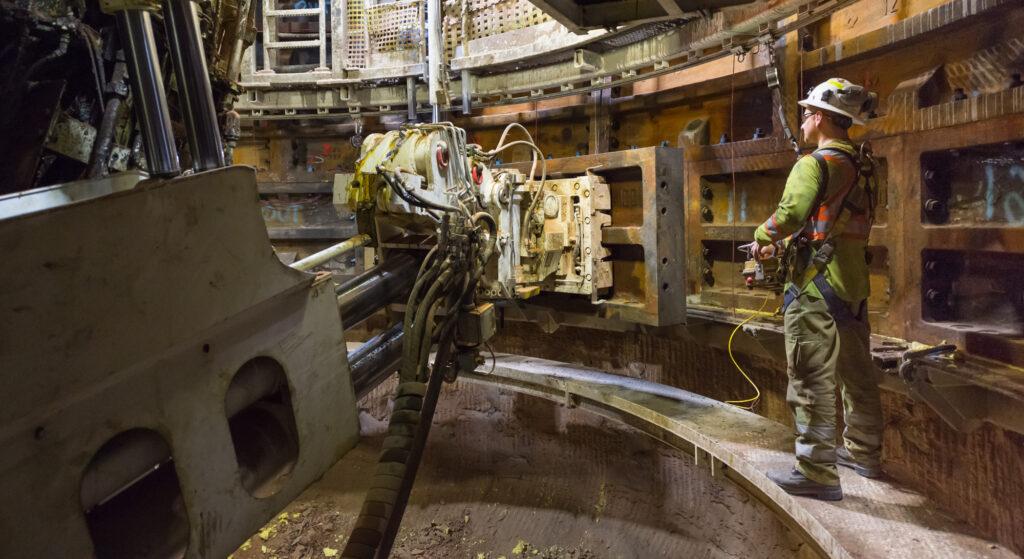The minerals industry is undergoing a remarkable transformation, both on a global scale and right here in Saskatchewan. Embracing cutting-edge innovations, this sector is now at the forefront of change. The infusion of Artificial Intelligence (AI), automation, sustainability initiatives, and a host of other breakthrough technologies is reshaping the industry and propelling it into a brighter and more sustainable future.
The Role of Innovation in Industry
A culture of innovation is the key to adaptable, competitive, resilient industries.
Innovation in the minerals industry takes on another imperative though: Advancements in technology, processes, and practices are vital for feeding and fuelling the world.
Digital Solutions Applied to Mining
Digital transformation is a significant presence in the minerals industry, and many digital solutions are being introduced to address this. AI and innovative technologies are being tested and utilized for:
- Machine learning. An exciting example is Cameco’s Advanced Mining and Processing through Efficiency and Digitization—Uranium Project (AMPED-UP), helping the organization apply digital transformation to ~50 of their projects.
- Predictive maintenance
- Autonomous equipment
- Training/education
- Platforms to track and report on ESG performance
- Remote/integrated operations centres as demonstrated at BHP’s Jansen mine and Mosaic’s K3 mine
- Digital twins
Digitization has almost endless possibilities for improving safety and efficiency in mining processes.
Artificial Intelligence in Mining
Let’s dig into a specific area of digitization making waves in industries and lives around the world: ChatGPT. Many of us have certainly tried ChatGPT, and the applications of this AI extend seamlessly into the minerals industry too.
Nutrien, a valued industry member of the IMII, is piloting the use of ChatGPT to mine a decade’s worth of safety data to view new trends and find relationships that inform existing and new safety strategies. ChatGPT has the potential to revolutionize process intelligence for mining companies around the world.
Sustainability in Mining
Environmental stewardship and global emissions are at the top of many industries’ minds and lists in 2024. Net zero emissions goals have been set by governments and organizations, and innovation is a necessity for reaching them. Some sustainable directions we’re seeing minerals companies invest in are:
- Tailings and waste management
- Water Stewardship
- The incorporation of renewable energy
- Improved equipment efficiency
- Carbon capture and storage
- Small Modular Reactors
Emissions reductions are a crucial step in protecting the environment and reaching net zero GHG emissions. A commitment from Nutrien states a 30% decrease/tonne of product in greenhouse gas (GHG) emissions by 2030. BHP has a goal of reaching net zero emissions by 2050 as per their GHG emission reduction targets and goals plan. The Mosaic Company’s net zero targets will be reached by their Florida operations in 2030, and company-wide by 2040.
Innovative minds and solutions have been and will continue to be vital for making minerals industry processes as environmentally safe as possible. IMII’s DEMOday 2024 Technology Needs notably include various environmental and emissions management technology categories, including CCUS, corrosion mitigation/prevention, emissions control, energy efficiency, tailings management, and water solutions.
We can’t get by trying to use old solutions on new problems. Innovation is the key to disrupting or upgrading existing systems and technologies. As the home to many critical minerals, Saskatchewan attracts new producers of such minerals. An influx of new and diverse perspectives is essential for driving the innovation needed to meet the growing demand for critical minerals.
Innovation will allow our minerals industry to remain resilient and adaptable in the face of change. As new problems come up, new solutions will continue to be developed. This is one reason why innovation is important to Saskatchewan’s minerals industry.



